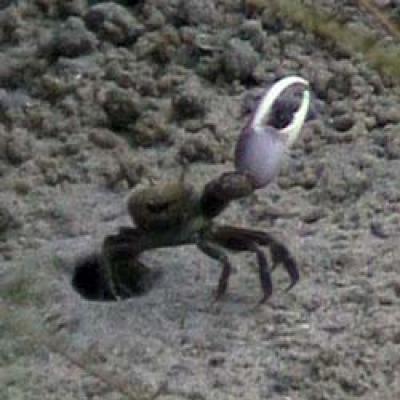A male fiddler crab's oversized claw not only looks cool to the ladies, but new research suggests it literally helps crabs to stay cool.
 A male Uca panacea performshe waving display. Credit: M. Zachary Darnell.Researchers Zachary Darnell and Pablo Munguia of the Marine Science Institute placed crabs under a hot light and took their temperatures. They found that the temperatures of crabs missing their large claw rose faster and reached a higher maximum than intact crabs.
A male Uca panacea performshe waving display. Credit: M. Zachary Darnell.Researchers Zachary Darnell and Pablo Munguia of the Marine Science Institute placed crabs under a hot light and took their temperatures. They found that the temperatures of crabs missing their large claw rose faster and reached a higher maximum than intact crabs.
The finding suggests that in addition to having a role in mating displays and in fighting off competitors, giant claws aid in thermoregulation.
"The major claw may function like a heat sink, transferring heat away from the body and, through convection, dissipating that heat into the air," said Darnell, a post-doctoral fellow at the institute.
The cooling action may help crabs to spend more time out of their burrows for foraging or sexual display. It might also help offset the energetic costs of such a giant appendage, the researchers say.
Reprinted from materials provided by University of Chicago Press Journals.

















Comments